Zaiqiao Meng
T-Retrievability: A Topic-Focused Approach to Measure Fair Document Exposure in Information Retrieval
Aug 29, 2025Abstract:Retrievability of a document is a collection-based statistic that measures its expected (reciprocal) rank of being retrieved within a specific rank cut-off. A collection with uniformly distributed retrievability scores across documents is an indicator of fair document exposure. While retrievability scores have been used to quantify the fairness of exposure for a collection, in our work, we use the distribution of retrievability scores to measure the exposure bias of retrieval models. We hypothesise that an uneven distribution of retrievability scores across the entire collection may not accurately reflect exposure bias but rather indicate variations in topical relevance. As a solution, we propose a topic-focused localised retrievability measure, which we call \textit{T-Retrievability} (topic-retrievability), which first computes retrievability scores over multiple groups of topically-related documents, and then aggregates these localised values to obtain the collection-level statistics. Our analysis using this proposed T-Retrievability measure uncovers new insights into the exposure characteristics of various neural ranking models. The findings suggest that this localised measure provides a more nuanced understanding of exposure fairness, offering a more reliable approach for assessing document accessibility in IR systems.
A Comprehensive Survey of Self-Evolving AI Agents: A New Paradigm Bridging Foundation Models and Lifelong Agentic Systems
Aug 10, 2025Abstract:Recent advances in large language models have sparked growing interest in AI agents capable of solving complex, real-world tasks. However, most existing agent systems rely on manually crafted configurations that remain static after deployment, limiting their ability to adapt to dynamic and evolving environments. To this end, recent research has explored agent evolution techniques that aim to automatically enhance agent systems based on interaction data and environmental feedback. This emerging direction lays the foundation for self-evolving AI agents, which bridge the static capabilities of foundation models with the continuous adaptability required by lifelong agentic systems. In this survey, we provide a comprehensive review of existing techniques for self-evolving agentic systems. Specifically, we first introduce a unified conceptual framework that abstracts the feedback loop underlying the design of self-evolving agentic systems. The framework highlights four key components: System Inputs, Agent System, Environment, and Optimisers, serving as a foundation for understanding and comparing different strategies. Based on this framework, we systematically review a wide range of self-evolving techniques that target different components of the agent system. We also investigate domain-specific evolution strategies developed for specialised fields such as biomedicine, programming, and finance, where optimisation objectives are tightly coupled with domain constraints. In addition, we provide a dedicated discussion on the evaluation, safety, and ethical considerations for self-evolving agentic systems, which are critical to ensuring their effectiveness and reliability. This survey aims to provide researchers and practitioners with a systematic understanding of self-evolving AI agents, laying the foundation for the development of more adaptive, autonomous, and lifelong agentic systems.
Constructing and Evaluating Declarative RAG Pipelines in PyTerrier
Jun 12, 2025


Abstract:Search engines often follow a pipeline architecture, where complex but effective reranking components are used to refine the results of an initial retrieval. Retrieval augmented generation (RAG) is an exciting application of the pipeline architecture, where the final component generates a coherent answer for the users from the retrieved documents. In this demo paper, we describe how such RAG pipelines can be formulated in the declarative PyTerrier architecture, and the advantages of doing so. Our PyTerrier-RAG extension for PyTerrier provides easy access to standard RAG datasets and evaluation measures, state-of-the-art LLM readers, and using PyTerrier's unique operator notation, easy-to-build pipelines. We demonstrate the succinctness of indexing and RAG pipelines on standard datasets (including Natural Questions) and how to build on the larger PyTerrier ecosystem with state-of-the-art sparse, learned-sparse, and dense retrievers, and other neural rankers.
SEW: Self-Evolving Agentic Workflows for Automated Code Generation
May 24, 2025Abstract:Large Language Models (LLMs) have demonstrated effectiveness in code generation tasks. To enable LLMs to address more complex coding challenges, existing research has focused on crafting multi-agent systems with agentic workflows, where complex coding tasks are decomposed into sub-tasks, assigned to specialized agents. Despite their effectiveness, current approaches heavily rely on hand-crafted agentic workflows, with both agent topologies and prompts manually designed, which limits their ability to automatically adapt to different types of coding problems. To address these limitations and enable automated workflow design, we propose \textbf{S}elf-\textbf{E}volving \textbf{W}orkflow (\textbf{SEW}), a novel self-evolving framework that automatically generates and optimises multi-agent workflows. Extensive experiments on three coding benchmark datasets, including the challenging LiveCodeBench, demonstrate that our SEW can automatically design agentic workflows and optimise them through self-evolution, bringing up to 33\% improvement on LiveCodeBench compared to using the backbone LLM only. Furthermore, by investigating different representation schemes of workflow, we provide insights into the optimal way to encode workflow information with text.
Grounding Chest X-Ray Visual Question Answering with Generated Radiology Reports
May 22, 2025Abstract:We present a novel approach to Chest X-ray (CXR) Visual Question Answering (VQA), addressing both single-image image-difference questions. Single-image questions focus on abnormalities within a specific CXR ("What abnormalities are seen in image X?"), while image-difference questions compare two longitudinal CXRs acquired at different time points ("What are the differences between image X and Y?"). We further explore how the integration of radiology reports can enhance the performance of VQA models. While previous approaches have demonstrated the utility of radiology reports during the pre-training phase, we extend this idea by showing that the reports can also be leveraged as additional input to improve the VQA model's predicted answers. First, we propose a unified method that handles both types of questions and auto-regressively generates the answers. For single-image questions, the model is provided with a single CXR. For image-difference questions, the model is provided with two CXRs from the same patient, captured at different time points, enabling the model to detect and describe temporal changes. Taking inspiration from 'Chain-of-Thought reasoning', we demonstrate that performance on the CXR VQA task can be improved by grounding the answer generator module with a radiology report predicted for the same CXR. In our approach, the VQA model is divided into two steps: i) Report Generation (RG) and ii) Answer Generation (AG). Our results demonstrate that incorporating predicted radiology reports as evidence to the AG model enhances performance on both single-image and image-difference questions, achieving state-of-the-art results on the Medical-Diff-VQA dataset.
Can We Edit LLMs for Long-Tail Biomedical Knowledge?
Apr 14, 2025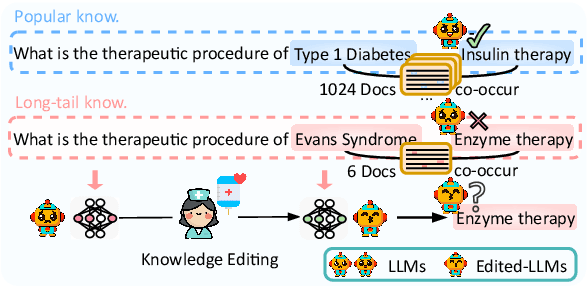
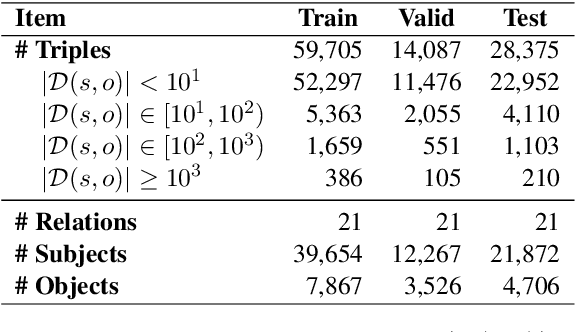
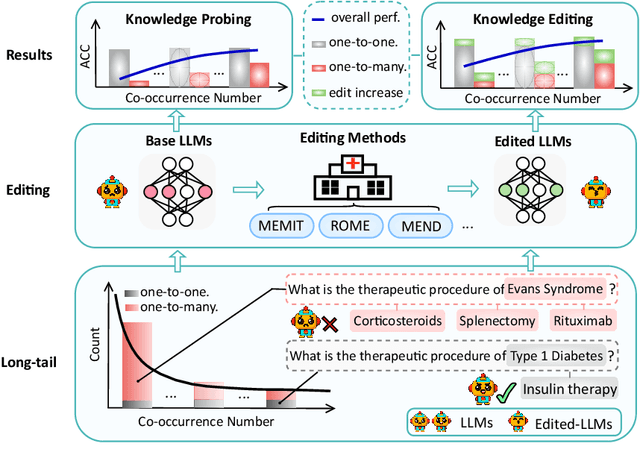
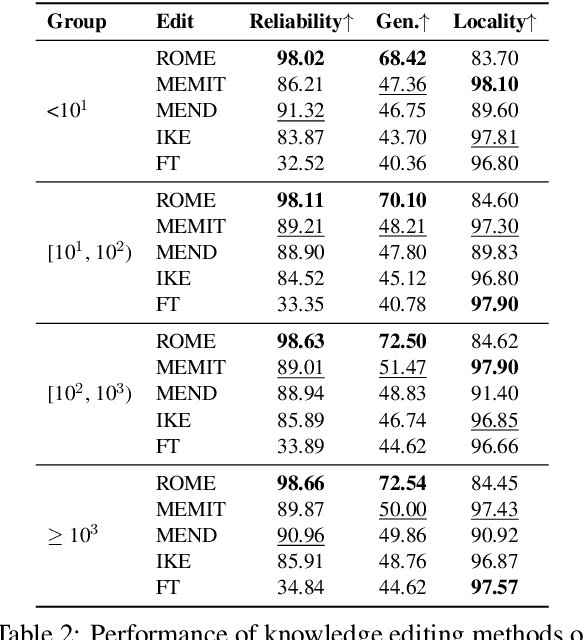
Abstract:Knowledge editing has emerged as an effective approach for updating large language models (LLMs) by modifying their internal knowledge. However, their application to the biomedical domain faces unique challenges due to the long-tailed distribution of biomedical knowledge, where rare and infrequent information is prevalent. In this paper, we conduct the first comprehensive study to investigate the effectiveness of knowledge editing methods for editing long-tail biomedical knowledge. Our results indicate that, while existing editing methods can enhance LLMs' performance on long-tail biomedical knowledge, their performance on long-tail knowledge remains inferior to that on high-frequency popular knowledge, even after editing. Our further analysis reveals that long-tail biomedical knowledge contains a significant amount of one-to-many knowledge, where one subject and relation link to multiple objects. This high prevalence of one-to-many knowledge limits the effectiveness of knowledge editing in improving LLMs' understanding of long-tail biomedical knowledge, highlighting the need for tailored strategies to bridge this performance gap.
KiRAG: Knowledge-Driven Iterative Retriever for Enhancing Retrieval-Augmented Generation
Feb 25, 2025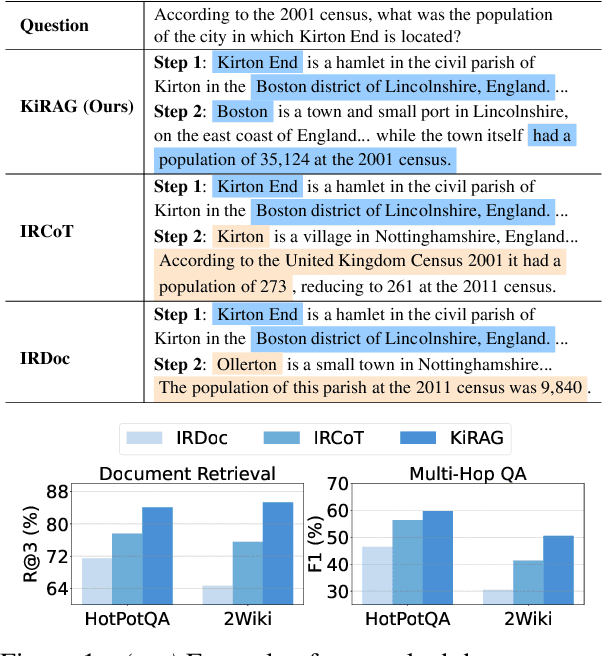
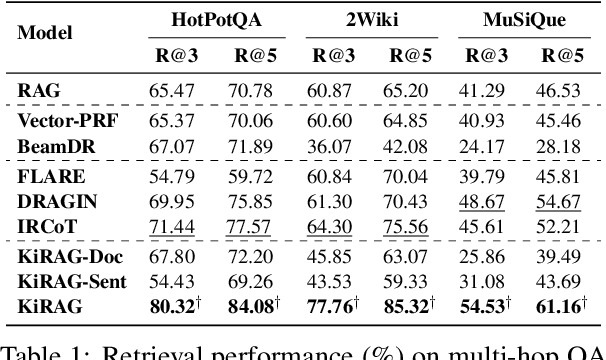
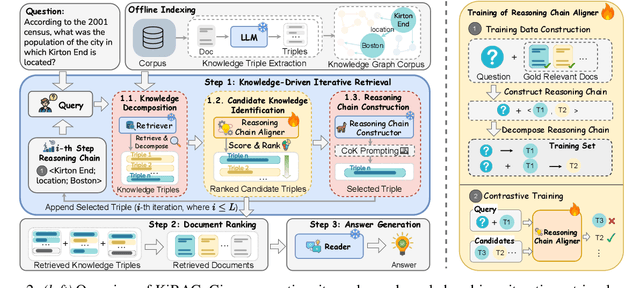
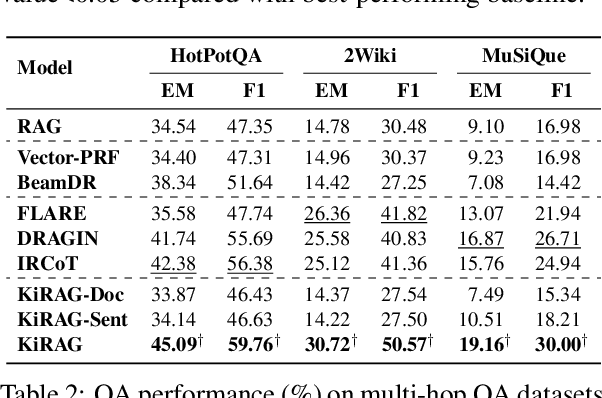
Abstract:Iterative retrieval-augmented generation (iRAG) models offer an effective approach for multi-hop question answering (QA). However, their retrieval process faces two key challenges: (1) it can be disrupted by irrelevant documents or factually inaccurate chain-of-thoughts; (2) their retrievers are not designed to dynamically adapt to the evolving information needs in multi-step reasoning, making it difficult to identify and retrieve the missing information required at each iterative step. Therefore, we propose KiRAG, which uses a knowledge-driven iterative retriever model to enhance the retrieval process of iRAG. Specifically, KiRAG decomposes documents into knowledge triples and performs iterative retrieval with these triples to enable a factually reliable retrieval process. Moreover, KiRAG integrates reasoning into the retrieval process to dynamically identify and retrieve knowledge that bridges information gaps, effectively adapting to the evolving information needs. Empirical results show that KiRAG significantly outperforms existing iRAG models, with an average improvement of 9.40% in R@3 and 5.14% in F1 on multi-hop QA.
KEIR @ ECIR 2025: The Second Workshop on Knowledge-Enhanced Information Retrieval
Jan 20, 2025Abstract:Pretrained language models (PLMs) like BERT and GPT-4 have become the foundation for modern information retrieval (IR) systems. However, existing PLM-based IR models primarily rely on the knowledge learned during training for prediction, limiting their ability to access and incorporate external, up-to-date, or domain-specific information. Therefore, current information retrieval systems struggle with semantic nuances, context relevance, and domain-specific issues. To address these challenges, we propose the second Knowledge-Enhanced Information Retrieval workshop (KEIR @ ECIR 2025) as a platform to discuss innovative approaches that integrate external knowledge, aiming to enhance the effectiveness of information retrieval in a rapidly evolving technological landscape. The goal of this workshop is to bring together researchers from academia and industry to discuss various aspects of knowledge-enhanced information retrieval.
On the Structural Memory of LLM Agents
Dec 17, 2024Abstract:Memory plays a pivotal role in enabling large language model~(LLM)-based agents to engage in complex and long-term interactions, such as question answering (QA) and dialogue systems. While various memory modules have been proposed for these tasks, the impact of different memory structures across tasks remains insufficiently explored. This paper investigates how memory structures and memory retrieval methods affect the performance of LLM-based agents. Specifically, we evaluate four types of memory structures, including chunks, knowledge triples, atomic facts, and summaries, along with mixed memory that combines these components. In addition, we evaluate three widely used memory retrieval methods: single-step retrieval, reranking, and iterative retrieval. Extensive experiments conducted across four tasks and six datasets yield the following key insights: (1) Different memory structures offer distinct advantages, enabling them to be tailored to specific tasks; (2) Mixed memory structures demonstrate remarkable resilience in noisy environments; (3) Iterative retrieval consistently outperforms other methods across various scenarios. Our investigation aims to inspire further research into the design of memory systems for LLM-based agents.
Gla-AI4BioMed at RRG24: Visual Instruction-tuned Adaptation for Radiology Report Generation
Dec 06, 2024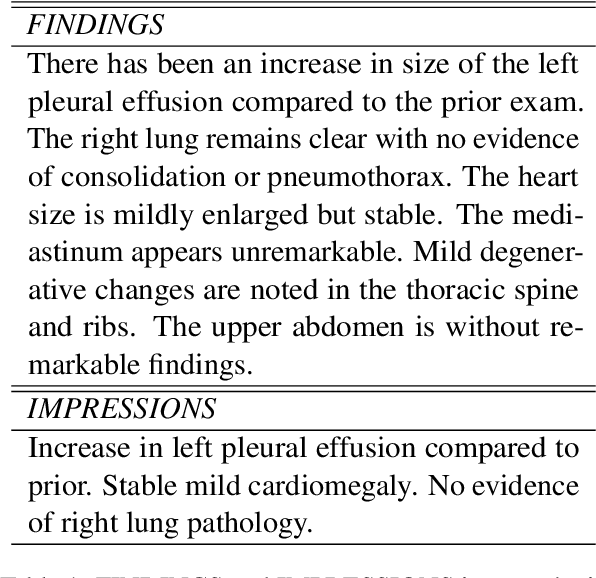
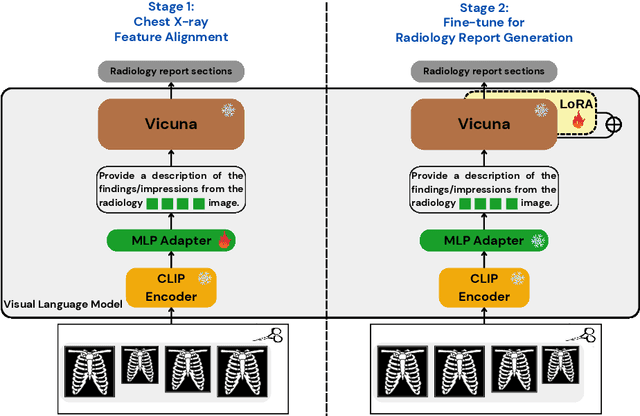
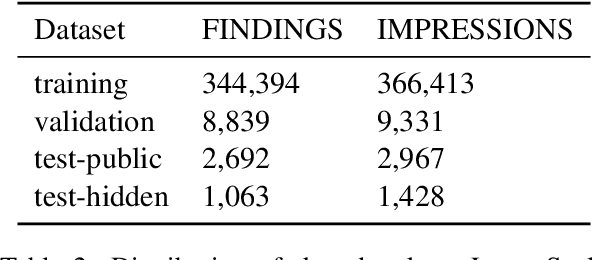
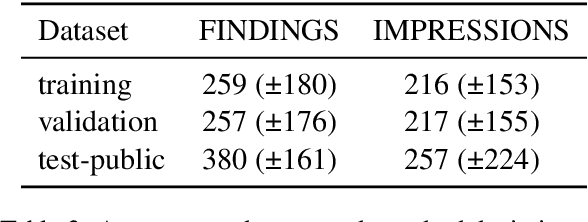
Abstract:We introduce a radiology-focused visual language model designed to generate radiology reports from chest X-rays. Building on previous findings that large language models (LLMs) can acquire multimodal capabilities when aligned with pretrained vision encoders, we demonstrate similar potential with chest X-ray images. This integration enhances the ability of model to understand and describe chest X-ray images. Our model combines an image encoder with a fine-tuned LLM based on the Vicuna-7B architecture, enabling it to generate different sections of a radiology report with notable accuracy. The training process involves a two-stage approach: (i) initial alignment of chest X-ray features with the LLM (ii) followed by fine-tuning for radiology report generation.
 Add to Chrome
Add to Chrome Add to Firefox
Add to Firefox Add to Edge
Add to Edge